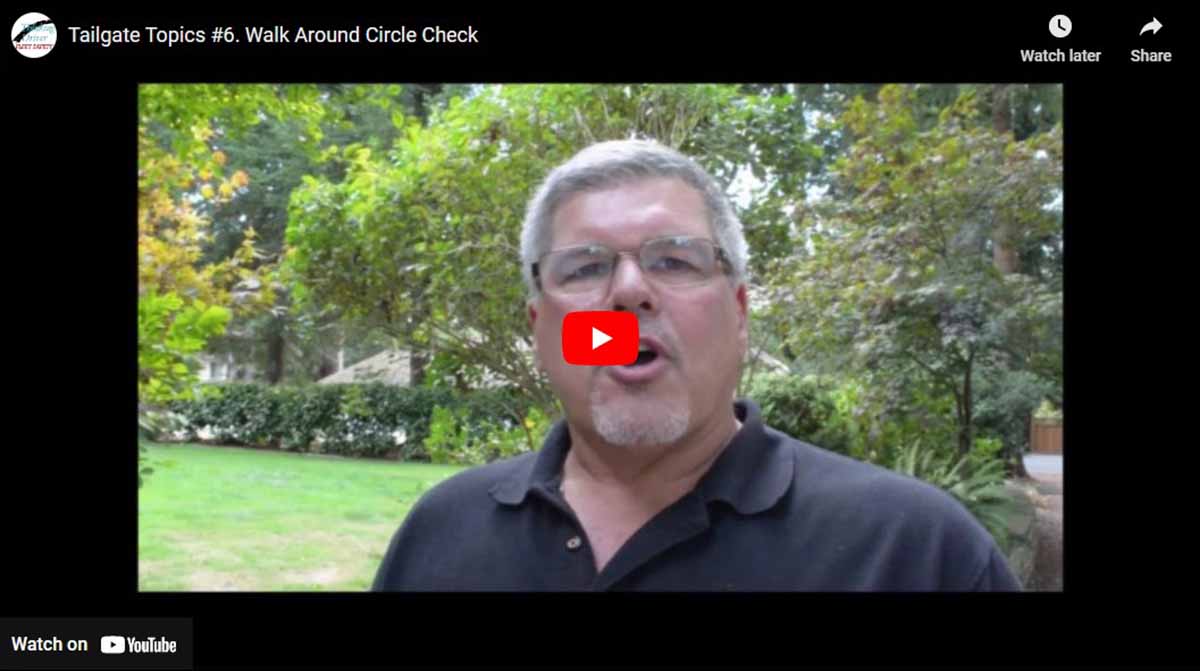Safety Meeting Planner & Agenda
Circle Checks!
Meeting Leader:
- Prepare in advance to make this meeting effective.
- Print and read over this entire agenda.
- Think about how you want to lead the meeting.
- Is there anything that is specific to your company or operation that you can include to personalize the information?
- Review the video for this session.
- Save the link to the video in your ‘Favourites’ folder on your browser for easy access.
- Open and then minimize the viewer just before the meeting to make the video introduction smooth.
Start Your Meeting!
Opening Statement:
How often to you walk around your vehicle before moving it? A circle check is mandatory before putting your vehicle into service at the beginning of the day and any time before backing up if you have been parked and this is the first motion you are making.
The Questions for this Meeting:
Q: Why is a walk around or circle check a good idea? There are many reasons but how many can we identify?
Answers Include:
- Walking around and checking vehicle condition can identify vehicle defects and safety concerns before you begin driving; in particular, the tire condition.
- A circle check gives you the opportunity to check the operation of lights and signals.
- If you are backing up (or moving forward in a vehicle with restricted visibility to the front), a circle check will allow you to notice obstructions or hazards in your immediate area that may cause a conflict when you begin moving.
Q: What is your excuse for not doing this quick and important safety check?
Discuss answers.
Tailgate Tips:
Meeting Leader: Check company policy and/or handbook to ensure that you adhere to policy otherwise use the suggestions below.
When you do your circle check, before the start of your day or shift, us a system. It could be:
- Unlock and start the vehicle.
- Turn on headlights and left turn signal.
- Begin by walking clockwise around the vehicle and check:
- Each tire as you pass it for damage, cuts or obvious problems including low pressure.
- Headlights, taillights and turn signal operation.
- Glass and mirror cleanliness and condition.
- Look for damage on any part of the vehicle and report it if found BEFORE driving.
- After arriving back at the driver’s door, click your headlights to high beam, change the turn signal to right signal and walk to the back and front to check the headlight high beams and right signal.
- If you have backed in near a wall or fence, check your own brake lights by looking for the reflection when you press the pedal, otherwise get someone to check when you apply the brake.
- And most important, if your vehicle is in the driveway at home or where there are children around, check for kids playing around the vehicle. Every year in North America, over 200 children are killed when backed over in their own driveway by parents, relatives or neighbours.
Introduce the Video:
Spencer McDonald discusses the importance of walking around your vehicle to check for hazards before moving it.
Practical Challenge:
Make a concerted effort to circle check. Agree as a group to watch each other and remind those that forget. Agree to not take offence if you get reminded.
Get the boss and office staff involved too!









